There are many fantastic ways to enjoy Mountain Biking, but the ultimate experience occurs when your thoughts crawl away to the back of your mind and your body flows along the trail without effort or voice. Time changes, tension disappears, you’re focused but 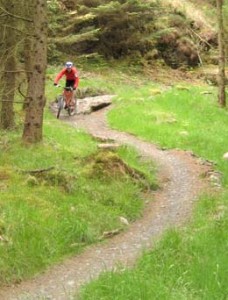 not forced. Controlling your bike becomes effortless, you’ve entered the magical state of “flow”.
not forced. Controlling your bike becomes effortless, you’ve entered the magical state of “flow”.
Dr. Mihali Csiskzentmihalyi describes it in his ground breaking book: “Concentration is so intense, that there is no attention left over to think about anything irrelevant or worry about problems. Self-consciousness disappears and time becomes distorted.”
Applying this to mountain biking allows you to think about and deal with the trail ahead, way before the bike gets to it. Having mentally dealt with the issues ahead, your body can do what it does best i.e. unconsciously and instinctively deal with what the terrain is doing to your bike. Rather than waiting for something to happen then responding to it, as a rider you will anticipate what is going to happen and deal with it far more appropriately and proactively. While this is occurring the mind projects still further down the trail and is already breaking down the next section and dealing with it.
The best thing about the “flow” is that even though your mind is working hard to achieve the desired effect, your thoughts will be calm, still and very simple. You will feel confident and committed to the trail, doubts become a thing of the past. If you are struggling with problems in your personal life they will vanish to never return until your wheels stop turning.
This apparent ability to flow freely down a trail is within everyone’s grasp, beginner or pro.
Here are some steps and pointers to help you along the way to achieving “flow”.
See Better go Faster
You can only ride as fast as you can scan the trail. When your eyes slow down and look closer to your front wheel, you have to slow down. When your eyes speed up and scan further ahead, you can speed up. Keep scanning ahead; never lock your eyes on anything.
Raise Your Gaze
If you look further down the trail, you will immediately become a better rider. When you raise your gaze, you literally elevate your perception of the trail. Instead of noticing individual objects – little round rock, big pointy rock, huge wet rock – you sense the overall flow of the trail – left, right, up, down.
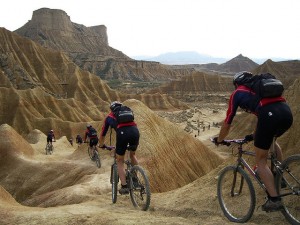 A big steep rock waterfall will scare most new riders. Most riders clatter down one rock at a time – bap, bap, bap, bap. Someone with “flow” will see the same section at a more basic level: a descent. Concentrate not on each individual element, but how the section links to the next one. Use your subconscious reactions to deal with the corrections in balance.
A big steep rock waterfall will scare most new riders. Most riders clatter down one rock at a time – bap, bap, bap, bap. Someone with “flow” will see the same section at a more basic level: a descent. Concentrate not on each individual element, but how the section links to the next one. Use your subconscious reactions to deal with the corrections in balance.
You are a Flashlight, not a Laser
Sweep your eyes over an area a meter wide that encompasses your line and the obstacles around it. You don’t want to be thinking: “rock right, fence left, tree, rock, drop.” Instead, see a ribbon of smooth dirt and just kind of feel the boundaries.
Beware the rock
When you see something scary, notice it but keep your eyes moving. As you approach the object, you unconsciously aim for it, slow down to keep it in view and fail to plan for the next situation. How often have you hit the one thing you were trying to avoid? When you fill your focus with one thing, there is no space to deal with anything else.
Under Your Wheel, Out of Your Mind
The root crossing the trail is not going to go anywhere. Keep scanning ahead and trust your automatic ability to get over. When you walk up a set of stairs, you don’t look at every single step. If you do, maybe biking is not for you.
Pick Great Lines
Because your tires need a path only a few inches wide, your choices are nearly endless. If you are just cruising, especially for the first time on that trail, go ahead and follow the worm line. The path most traveled weaves around obstacles and provides the smoothest, easiest route. A thousand happy bikers can’t be wrong can they?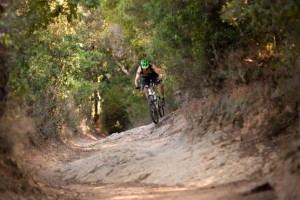
Well, yes, they can. Most riders dive into corners too early, creating slow exit lines. For low speeds and climbing the smooth line works fine. But if you increase your speed you will have a hard time sticking to the worm lines. You could just slow down, but that’s no fun. Instead look for straighter lines and smoother arcs. Pump right over the rocks instead of curving around them. Line up wide for corners and exit wide, even where roots crisscross the trail.
Experiment a little to figure out which objects are beyond you ability to ride over. As you zoom down you can then avoid these objects that are above your ability and otherwise ride across the straightest line available.
Dial in Your Speed
Fast is more fun, but the real measure of this is perceived speed. 10 miles per hour on a bike feels faster than 650 miles per hour in a airplane.
Every line has more than just one possible speed. Steep, gnarly lines have a narrow range of speed – too slow and you can’t carry over rough sections; too fast and you lose control. The gnarlier the line, the more speed you need and the more you must commit. To achieve “flow” you must be aware of the speed required and make “peace” with it. You have to surrender to the speed required by the hill. If you feel like you are losing confidence as your speed builds up, then remember that braking screws up your handling and that you can’t really slow down that much anyway. Remind yourself that this speed is required to get you down safely and that slowing down won’t protect you.
People who try to haul ass before they master the basics crash often and hard. That’s a counterproductive way to become a faster rider. Instead, concentrate on being smooth. Speed will come.
Commit
To be able to flow, you must do everything with confidence. The more a situation tests your skills and confidence, the more commitment you have to have. Failure to commit leads to failure to stay on your bike.
Can You See it?
If you can see and feel yourself doing a move – a big jump, a tricky rock section – you can usually do it. If, on the other hand, all you see is a blank screen (or yourself crashing), you usually cannot do it. When most riders encounter the blank screen, they tense up and make mistakes. If you can’t see it, don’t try it.
Find a State of Flow
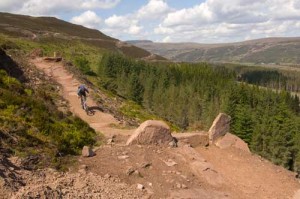 Flow can only occur when the demands of the trail match your abilities. The trail is not so hard that it scares you, nor is it too easy that it bores you. Most of us can climb faster, corner faster and fly farther than we usually do and think we can, so don’t be scared to try something a bit over your perceived ability. Just don’t go over board with this for obvious reasons.
Flow can only occur when the demands of the trail match your abilities. The trail is not so hard that it scares you, nor is it too easy that it bores you. Most of us can climb faster, corner faster and fly farther than we usually do and think we can, so don’t be scared to try something a bit over your perceived ability. Just don’t go over board with this for obvious reasons.
Unfortunately we can’t just put on a Flow-Tron 2000 helmet and instantly get the flow, but we do know that flow requires following precise elements.
Adequate Skills
You don’t learn to flow, you learn to ride your bike. When you can corner, hop, pump and jump without thinking then you can flow. When you worry about surviving the ride you cannot flow.
Goals
If you ride around with no mission, you miss the rewards of accomplishing goals. Set a goal. You have to know you are doing a good job.
Excitement
Too little stress and you mind wanders. Too much stress and you freak out. Go ahead and let some butterflies flutter in you tummy. They tell you, you are being pushed and a huge rush awaits.
Practice
Don’t just go out and ride. Pay close attention to what you are doing. Systematically build the skills you need to rip. Focus your mind on doing something perfect, do it a million times.
Pick the Right Tool for the Job
You should not be worrying about your bike letting you down. Make sure you have a bike that fits your riding style and the type of trails you like. Read some of our useful buying guides and reviews to figure out which bike is for you and then; go forth and buy!
Conquer Your Obstacles
Pay attention to the things that prevent or interrupt your flow. Maybe you tense up every time you encounter a specific type of rock formation, either stay away from them, or invest some time in learning to overcome them.
Don’t pay Attention to Yourself
As soon as you realize you’re tearing the trail up, the tearing pretty much comes to an end. Remember the scene in “The Empire Strikes Back” when Luke is standing on one hand, with his eyes closed, with Yoda and a bunch of stuff balanced on his feet, and he started to levitate his X-Wing fighter? He was tearing things up. As soon as he opened his eyes and thought, “Yes! I’m a Jedi Master!” it all came crashing down. Don’t be self-conscious like Luke. Be confident like Han.
Hopefully this guide can point you in the right direction to achieving flow. From experience I would say that one of the most important parts of achieving flow is the first point we looked at about looking ahead. If you can master this skill, then you will be able to achieve the calm state of mind required to flow. I hope this article will help you squeeze some more fun out of biking and maybe even make you a better rider along the way.
How Flowy Are You?
I’d love to hear your thoughts on flow. Pop answer to any of these in the comments below:
- Have you experienced flow on your bike, or elsewhere?
- What are your tips on achieving flow?
Image Credits:
Flickr: RalphKaty ~ JerboNotz ~ Balazs ~ MikelOrtega

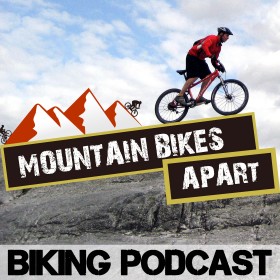
Yes! You have hit on exactly why mtnbiking has been such a passion for me. My son claims snowboarding is similar with regard to “flow”.
significant parts of the text are from the book Mastering Mountain Biking Skills, by Brian Lopes and Lee McCormack